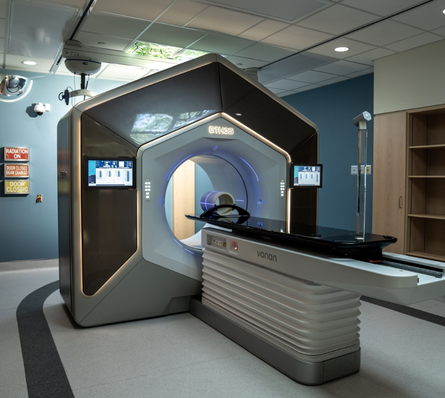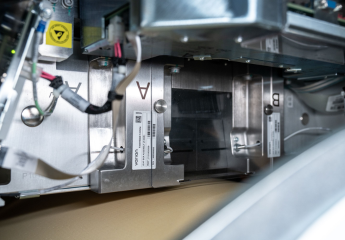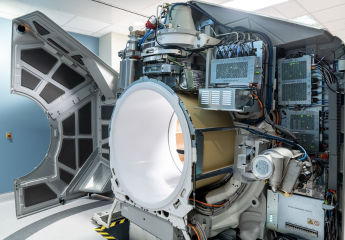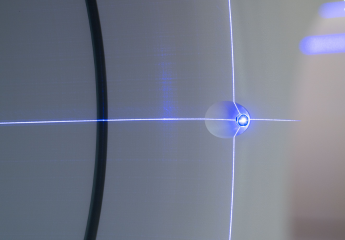
Your Impact Spotlight
Nearly 50 per cent of Canadians will be diagnosed with cancer in their lifetime, making the need for quick, effective treatment greater than ever.
For decades, Linear accelerators (LINACs) have been used to treat all solid tumours and some blood cancers, delivering high-energy particles to a patient’s tumour while sparing healthy tissue.
“Access to this technology wouldn’t be possible without donors and London Health Sciences Foundation. The Ethos ushers in a new era of radiation therapy, allowing us to adapt to the patient instead of the patient adapting to the machine.”
Dr. Stewart Gaede, Chief Medical Physicist
Introducing the treatment of tomorrow: Ethos
In May 2025, The Mitchell and Kathryn Baran Family Foundation’s generous support enabled London Health Sciences Centre (LHSC) to become the fourth site in Canada to install an Ethos LINAC. Ethos is changing the game with artificial intelligence (AI) integration and enhanced imaging capabilities.
What does this mean for patients?
- Shorter wait times for LINAC treatments and CT scans
- Quicker and more comfortable sessions
- Fewer side effects
- More personalized care
- Improved accuracy
Accelerator waveguide
Electrons are accelerated close to the speed of light using powerful electromagnetic waves. This energy is used to generate an electron beam.
Target
If x-ray treatment is needed, the electron beam hits a heavy metal target, converting it into high-energy x-ray beams—ideal for tumours located deep beneath the skin's surface.

Real-time adaptive tool
Ethos can detect changes in the body—such as tumour growth or patient weight fluctuations—and, within minutes, adapts the treatment plan before delivering radiation. Unlike older systems that required days for a new CT scan and manual re-planning, Ethos uses AI to adjust within 10 minutes. This not only reduces side effects by better targeting the tumour but also frees up CT scanners, improving access for other patients.
Shielding
This ensures radiation is directed only where needed, protecting patients, staff and surrounding areas from unintended exposure.
Multi-leaf collimator 
By moving these leaves, Ethos can customize the radiation beam's shape and even adjust its intensity across the treatment area.
The rotating gantry 
Unlike older machines, Ethos has a circular gantry (similar to a CT scanner), allowing it to scan 4x faster than previous models.
Surface Guided Radiation Therapy (SGRT) 
SGRT uses multiple 3D cameras to create a surface map of the patient in real-time during treatment, ensuring accurate positioning.
Linac Fast-Facts
![]()
4,000–4,500 patients receive radiation therapy at LHSC each year
![]()
Ethos can treat 10–20 more patients per day
![]()
Breast cancer treatment time may be reduced from 15–20 minutes to just 8 minutes
![]()
London is the second site in Ontario to have this machine and will begin treating patients in August 2025
If you would like to learn more or support radiation therapy, please contact either:
Pam Taylor
Associate Vice President, Development
London Health Sciences Foundation
t. 519.685.8721 | c. 226.927.2919
pamela.taylor@lhsc.on.ca
Tracy Burwell
Senior Development Officer
London Health Sciences Foundation
c. 226.377.8780
tracy.burwell@lhsc.on.ca